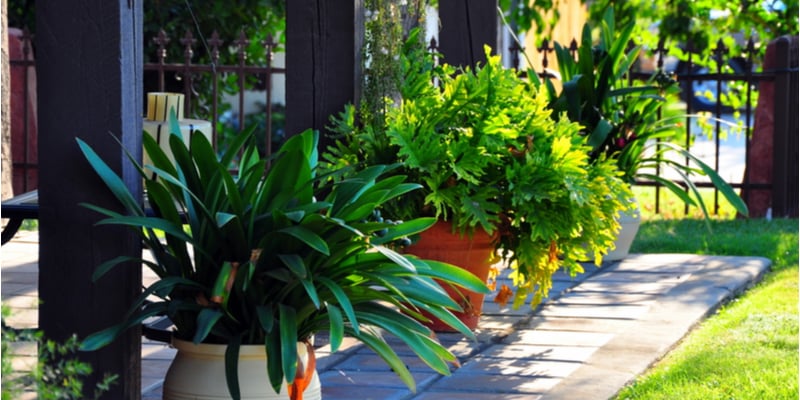Plants need water to thrive. The key to healthy plants is ensuring there is not too little and not too much. Self-watering planters can solve the problem, giving your plants the constant water they need, regulated appropriately. Self-watering planters feature a build-in liner which collects water and distributes it 24/7 as needed for your plants. Plus, these planters reduce your work and save you time while keeping your plants growing stronger, healthier, and more beautiful. Let’s explore all the ways self-watering planters help you and your plants.
The Right Amount of Water
Water helps your plants thrive, but only when they are provided with the proper amount. Too much water can be just as detrimental as not enough water when it comes to your plants. The tricky part is some plants needs more water and some need less to thrive and uncovering the perfect amount can be hard to determine. But the right amount of water is key to the health of the roots and in turn, your plants. The roots work hard ensuring the plants get water and nutrients needed for healthy growth. With too little water, plants become ill and malnourished. With too much water, root rot can occur.
Self-watering planters solve the problem ensuring your plants get the right amount of water needed to thrive.
Dehydrated versus Overwatered Plants – How to Tell the Difference
Plants which are dehydrated and need more water often appear lifeless and wilted. You can often tell you plant needs more water simply by looking at the soil in the planter. If your planter is lighter than normal, your plant likely needs water. If the soil is pulling away from the sides of the pot, the same is true, your plant needs water. When unsure if your plants need water, you can always feel for yourself, poking you finger into the soil. Moisture indicates sufficient water.
When your plant is getting too much water, some signs are similar – like wilting and lifelessness. The problem with overwatering is root rot is inevitable. Other ways to tell if your plants are getting too much water include the presence of green algae growth in the soil, lower leaves are yellowing, and new growth turns brown and falls off just after sprouting. Checking your soil before watering is the easiest way to prevent overwatering. Generally, you don’t need to water until the soil feels dry.
Of course, there is an easier way!
Self-Watering Planters Take Care of the Hard Work of Watering
The truth is self-watering planters can easily solve the watering problem for you, plus save you time and money (when you have to replace the plants). Self-watering planters are crafted to take care of the hard work of watering, managing the proper water range for your plants. Water flows from the pot into a separate chamber away from the soil and the plant’s roots. When the plant needs water, surface tension causes the water to rise, allowing the soil and then the roots to absorb it as needed.
Self-watering planters are a great solution for indoor planters as well as outdoor planters, helping to prevent overwatering or dehydration. Even outdoors on the hottest of days, you can rest assured your container plants are getting the water needed. Plus, self-water planters, while a bit more costly than traditional planters, pay for themselves quickly in the time saved as well as money saved in replacing plants which had succumbed to overwatering or dehydration. With self-watering planters, you can go for days, weeks, or months without watering and still have beautiful thriving plants without the hassle or worry of watering.
When you chose TerraCast Planters with Self-Watering Attachments, you will experience the convenience and saving of self-watering, but also the beauty and durability of TerraCast Products. Find your perfect planters at TerraCast, available in variety of styles and colors – perfect for your décor.

